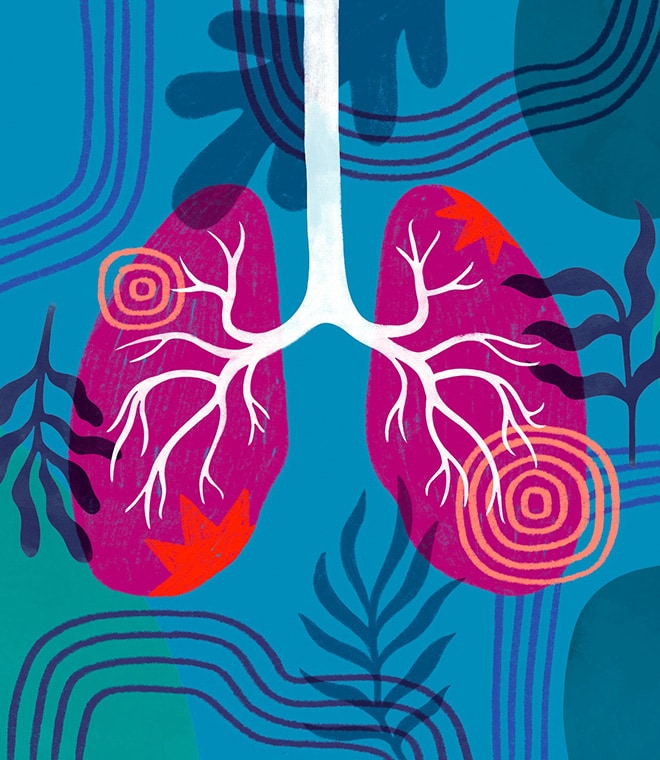Health
Lung cancer risk factors
By Nancy Kupka, PhD, RN Mar 17, 2022 • 4 min
What causes lung cancer?
Like any other cancer, lung cancer occurs when cells in the lung mutate or change. Although there are many factors that can cause this mutation to happen, in lung cancer, this occurs most often as a result of breathing in dangerous, toxic substances at some point in your life.
Smoking is the number one cause of lung cancer, causing about 90% of lung cancers. The chemicals in cigarette smoke can even cause lung cancer in nonsmokers if they breathe in secondhand smoke. Lung cancer has even been found in mice exposed to thirdhand smoke. This is the residual smoke in the environment, such as that found in carpets and fabrics, where smoking has occurred.
Radon exposure is the second-leading cause of lung cancer. Radon is a radioactive gas that comes from the natural breakdown of uranium in soil, rock and water. Radon has been found in 1 of every 15 homes in the U.S, but it can also be found in any type of building, such as your home, office or school. You can easily test your home for radon using kits sold at hardware stores, and there are also inexpensive, do-it-yourself methods for repairing radon leaks. If you suspect or know that you have high levels of radon in your home, contact your state radon office for advice.
If you smoke and your home has high radon levels, your risk of lung cancer is especially high. But smoking and radon exposures are not the only hazards to avoid. Exposure to other hazardous chemicals, such as asbestos, uranium, arsenic, cadmium, chromium, nickel and some petroleum products, pose a lung cancer risk. Even the air we breathe outside contains a mix of tiny solid and liquid particles, or particle pollution, which also increases the risk of lung cancer.
Finally, a family history of lung cancer may mean you are at a higher risk of getting the disease. Make sure that your healthcare provider knows if others in your family have had lung cancer and ask if lung cancer screening is recommended.
Clinically reviewed and updated March 2022.



